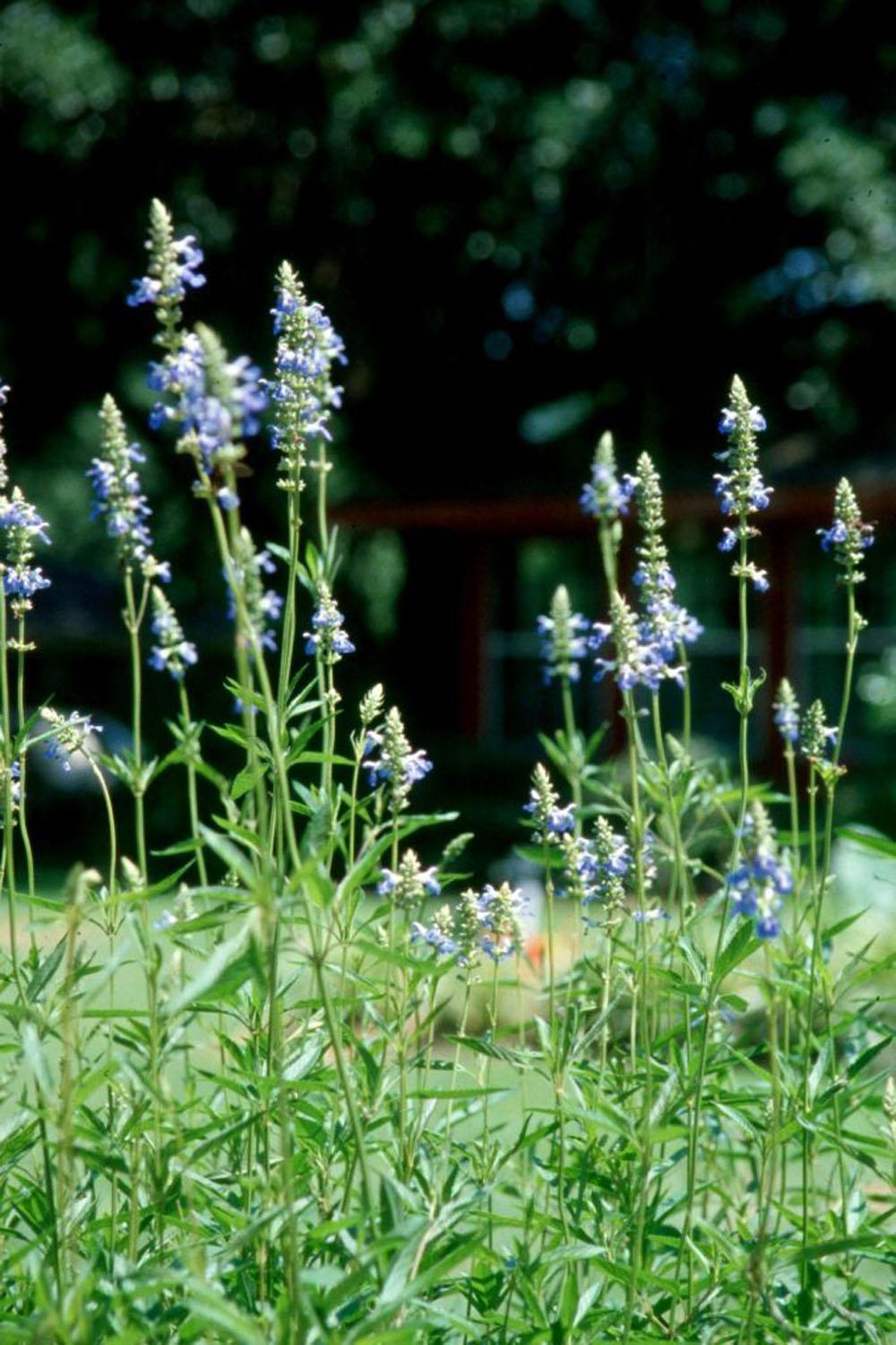Information Possibly Outdated
The information presented on this page was originally released on May 20, 2004. It may not be outdated, but please search our site for more current information. If you plan to quote or reference this information in a publication, please check with the Extension specialist or author before proceeding.
Despite unfortunate name, bog sage salvia is beautiful
By Norman Winter
MSU Horticulturist
Central Mississippi Research & Extension Center
If I remember correctly, it was Juliet who wondered, "What's in a name?" When it comes to flowers, a name can be quite important.
Take, for instance, one of my favorite salvias, the bog sage. This beautiful, sky blue, spiky flower has to suffer the indignation of being called the bog sage.
If you don't have a bog, will it still grow well? The answer is, of course. The salvia looks beautiful in hummingbird or cottage gardens. But with a name like that, garden centers often aren't convinced they should invest in the bog sage.
Unfortunately, its botanical name isn't any better: Salvia uliginosa. I'll bet you 10 bucks when you first read the name you thought it would be pronounced Salvia ugly-a-nosa, instead of Salvia u-lig-a-nosa.
The bog sage is native to the South American countries of Brazil, Uruguay and Argentina and is starting to bloom all over the state in gardens where perennials are cherished. It is cold-hardy and heat tolerant over the entire state. It thrives in full sun but will tolerate a little shade as well.
One of the taller salvias for the garden, the bog sage can reach 6 to 7 feet high and produces rare, sky-blue flowers. It is just starting to bloom now and will keep up this flower production until frost. A little deadheading and cutting back will keep the flowers coming, as well as the ruby-throated hummingbirds that feast on its nectar.
Despite the name that makes it sound like it will grow in water, you should plant in well-drained, fertile soil. While preparing the soil, incorporate 2 pounds of a slow-release, 12-6-6 fertilizer per 100 square feet of planting area. You'll want to space these plants 20 to 42 inches apart and place them to the back of the border.
Established plants need a light application of fertilizer in the spring with the emergence of new growth and about every eight weeks through September. The bog sage will need dividing to keep its aggressive nature in check. I prefer to divide the clump when growth is resuming in the spring.
The bog sage begs to be planted in an old-fashioned cottage garden in front of a white picket fence draped with an antique rose like Zepherine Droughin or perhaps New Dawn. Plant it with Early Sunrise coreopsis, Becky Shasta daisies or Bravado purple coneflowers. It also looks striking when grown in combination with Coronation Gold Yarrow, which will serve as a mid-level plant, and Homestead Purple verbena as the lower-level plant.
Don't let the name throw you -- this is an outstanding perennial. Because finding the bog sage will likely take some searching on your part, make the hunting really pay off by looking for Rudbeckia triloba (three-lobe-leafed black-eyed Susan), Salvia involucrata (Pink bulbous sage) and Verbena bonariensis ("Verbena on a Stick"). All of these are great perennial plants sadly in need of new names. But as Juliet said, "What's in a name ?"



